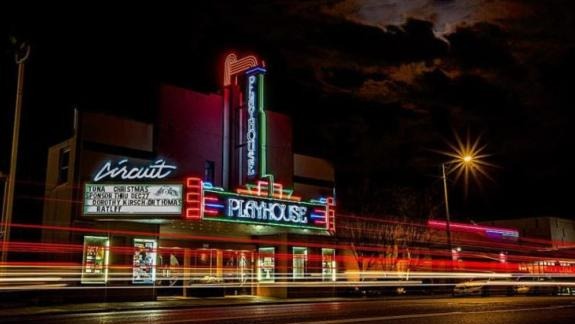1963: First Steps
As students at Overton High School, Walter Slaughter and Jackie Nichols frequently worked on school productions together. But in the summer of 1963, they were on hiatus, so to speak. So, the friends came up with a plan to start a teenage acting company and tour the shows — circuitously — into church and community center auditoriums. Naturally, it would be called “Circuit.”
They sought the advice of Ray Hill, a professor at Southwestern College (now Rhodes) about this idea. He lived on Auburndale near Overton Park in a three-bedroom bungalow. The first time the pair entered his house, they were shocked. The whole interior except for the kitchen and living room was a library. Not just some shelving against the walls, but rows of theatre books and scripts organized with aisles between them in every room.
Ray had read everything. He didn’t drive, which meant more time for reading while perambulating around town. It’s a miracle he was never hit by a car.
Ray was highly educated and enormously generous with his time and knowledge, but he also had a playful sense of humor. Short and pudgy, he regularly appeared on a Channel 5 morning kids’ show as Tiny the Clown with Trent Wood. Children loved him.
From his vast theatrical library, Ray selected the Circuit Players very first show, which he also agreed to direct. His choice: Fashion Or Life In New York by Anna Cora Mowatt, a 19th Century American playwright. Her satire of American fashion and manners in 1845 had historic value, but also (conveniently for the fledgling producers) it was in the public domain, meaning no royalties were required to stage the production. The cast of a dozen had six men, six women and four set locations, accomplished with revolving panels built at Underwood Methodist Church and in Jackie’s backyard. Three technicians joined the effort. The whole cast came together to build set pieces, sew costumes, sell ads, and move scenery and lights. The young company supported itself by holding rummage sales in various neighborhoods and selling Christmas trees during the holidays.
After finishing the run at Colonial Park, St. Stephens and Union Avenue Methodist Churches, the cast split the meager ticket revenue ($1 a ticket) with the venues, and the remaining profits were divided evenly among all the castmates.

1965: Acting Up
After two relatively small-scale summer productions in 1963 and 1964, the high school thespians agreed to take on a more ambitious project. They first booked a better-equipped venue, the swimming-pool-turned-theater space at the Pink Palace Museum. It was also the home of Memphis Little Theatre (now Theatre Memphis).
“They didn’t have shows during the summer,” Nichols remembers. “So, we offered to rent their space for a month and began assembling a cast and production team.”
Rodgers and Hart’s 1937 musical Babes in Arms was directed by Linda Lewis and music director Jane Strauch. The show required more technical and artistic prowess than their previous effort, along with another essential element: live musicians.
“We were still billing ourselves as a teenage acting troupe,” Nichols says. “But others in the community started taking notice and the three or four adult roles in the show were taken by adults, instead of kids acting like adults.”
It represented a major jump in commitment, as well. More performances meant a bigger budget and an expectation of higher quality. Theatergoers were supportive; almost all of the shows sold out. One reporter who had driven from Forrest City, Arkansas, delivered a memorably positive verdict — a thumbs-up echoed by local reviewers.
The young performers weren’t the only ones motivated to keep growing from the experience. Nichols remembers that Memphis Little Theatre would stage its own summer shows from that point forward.

Christopher Blank is WKNO’s News Director, a frequent contributor to NPR, and moderates conversations about Memphis’s arts and culture community through the station’s Culture Desk Facebook page. He wrote this history of Playhouse on the Square for the theatre’s 50th anniversary.


You must be logged in to post a comment.